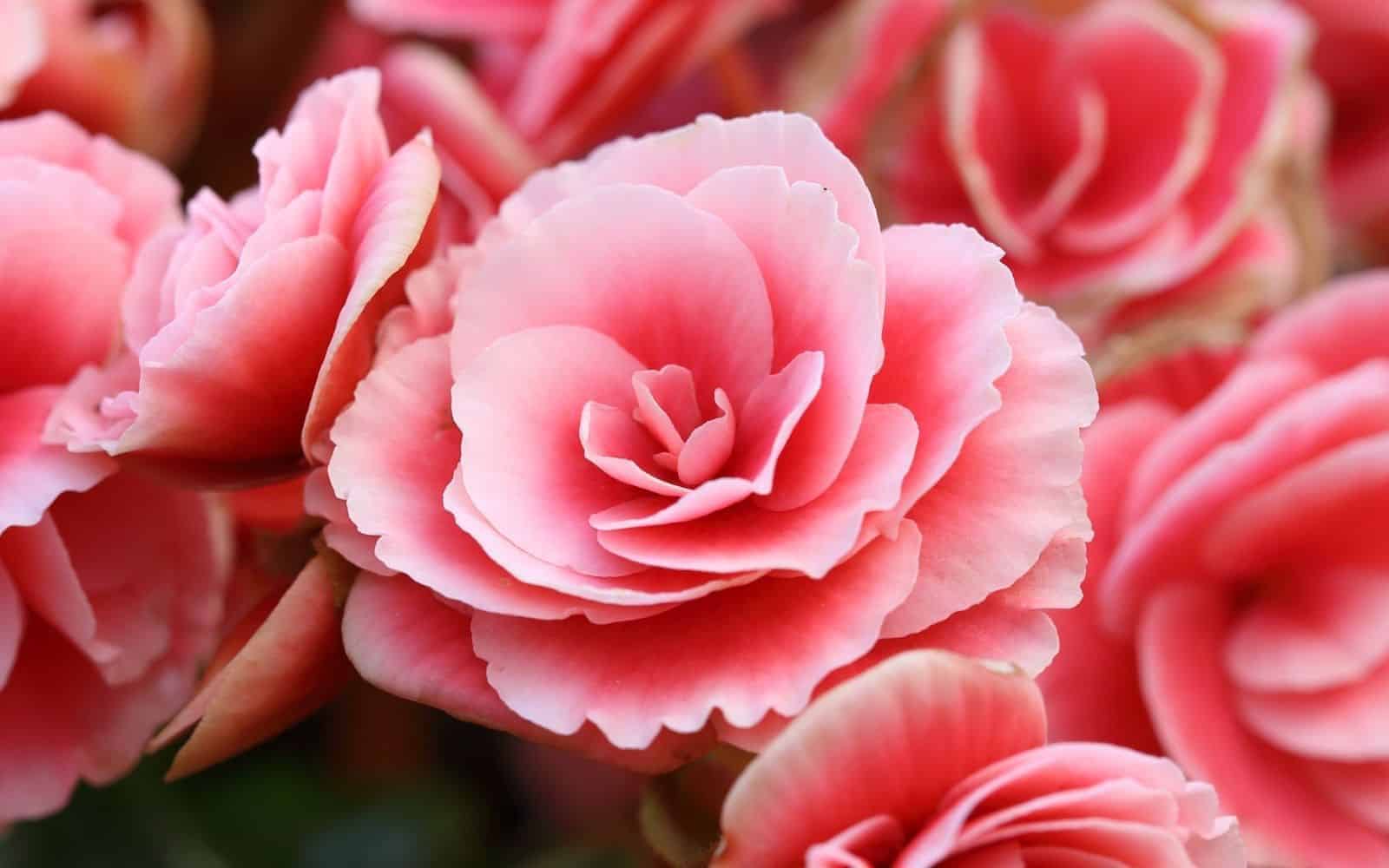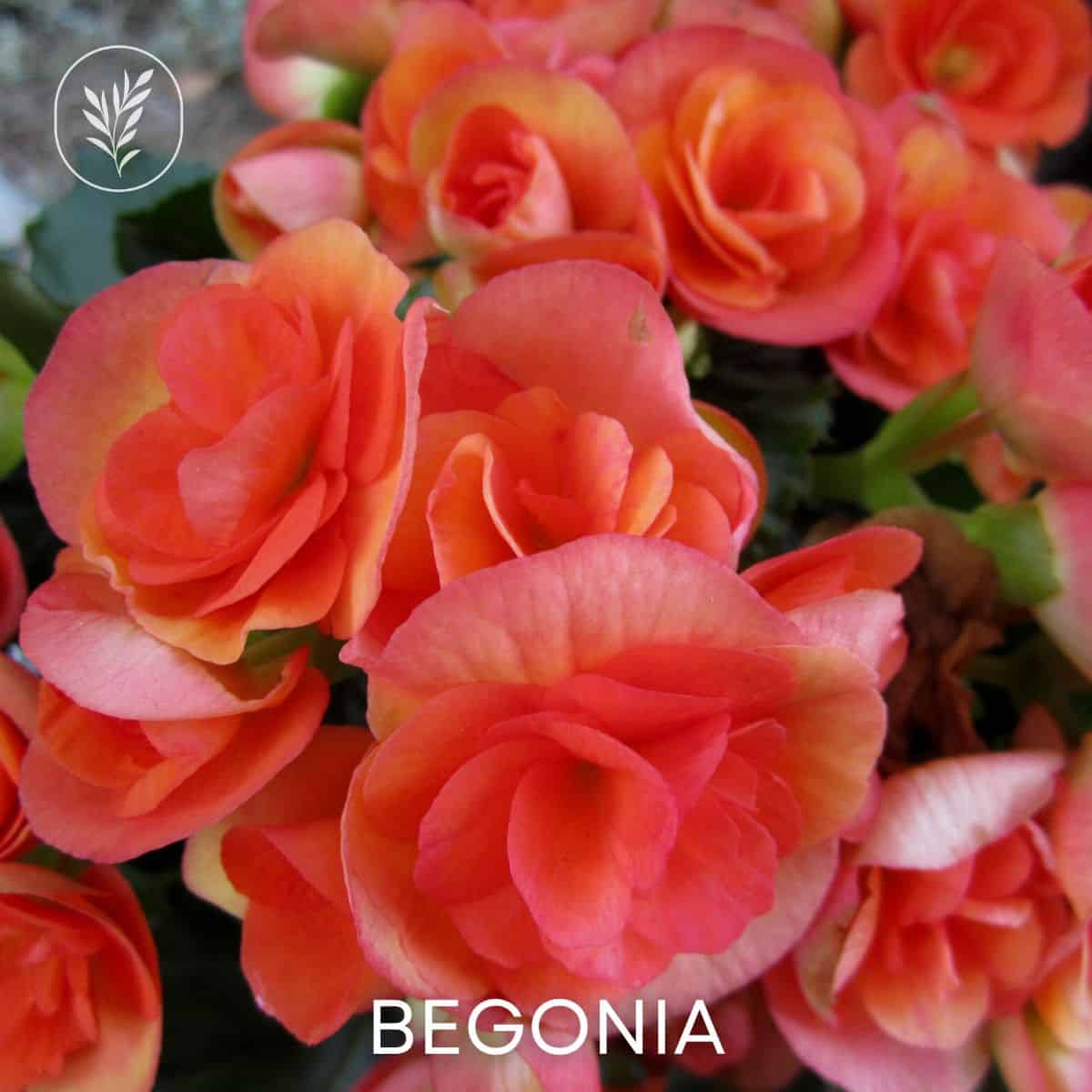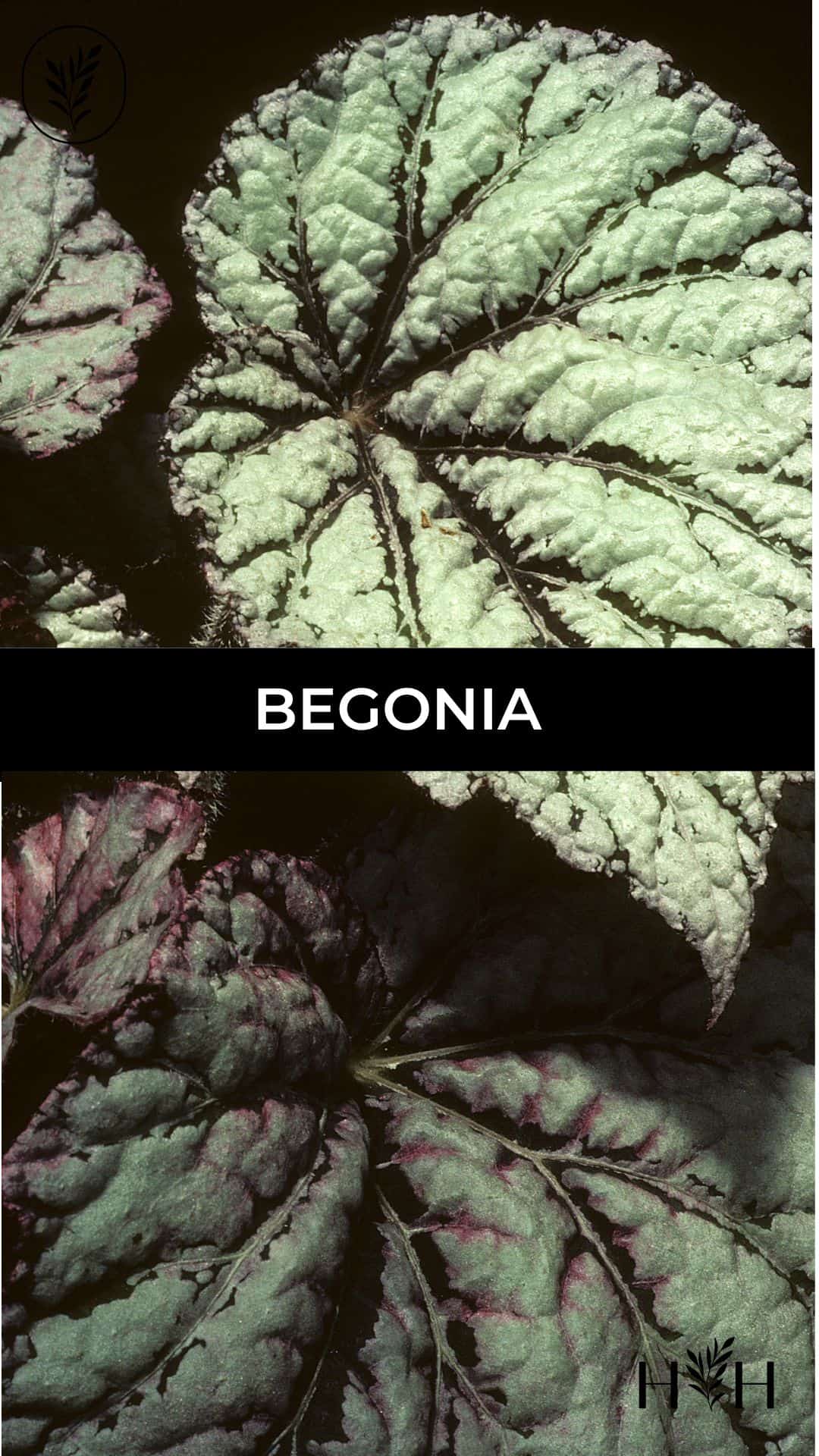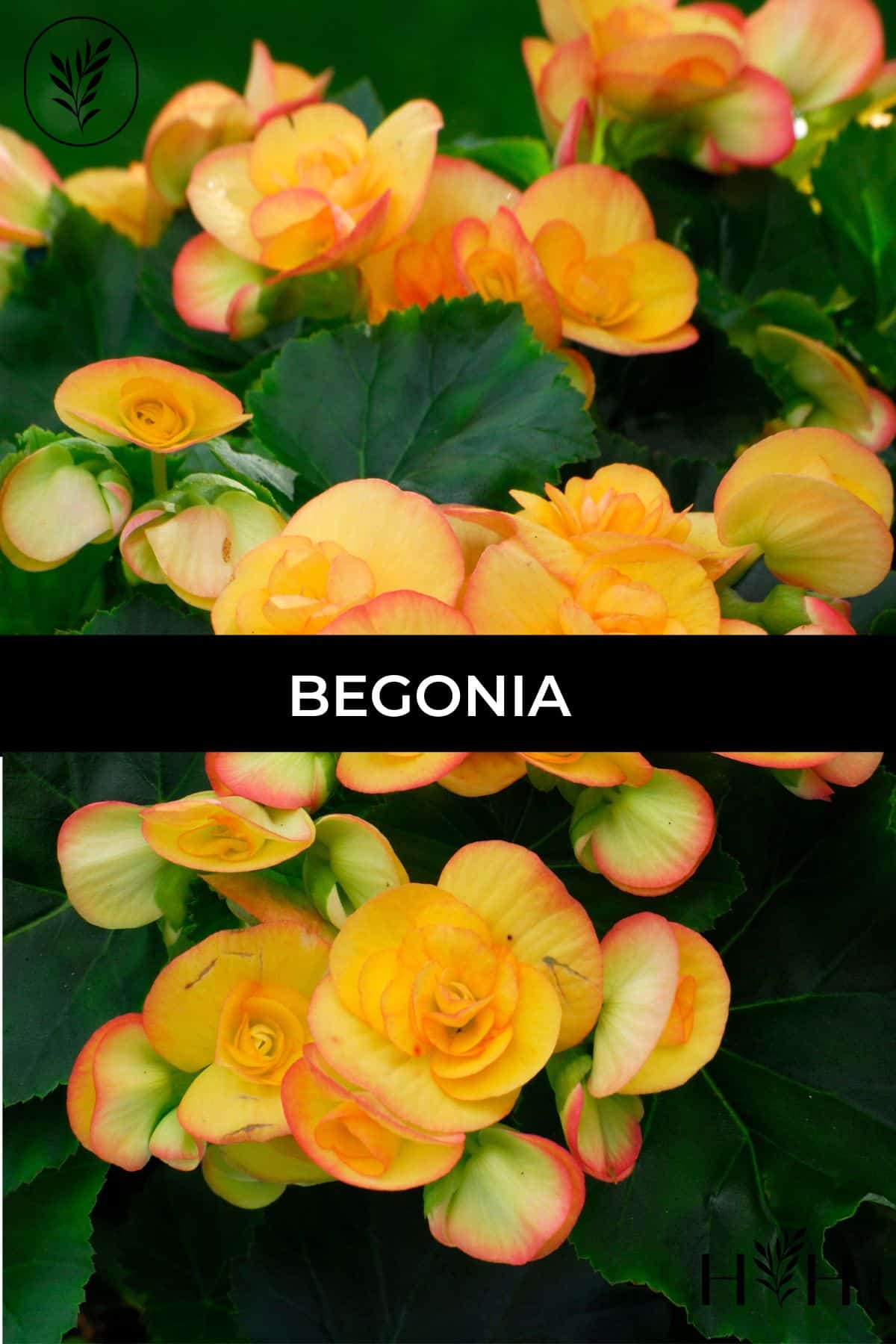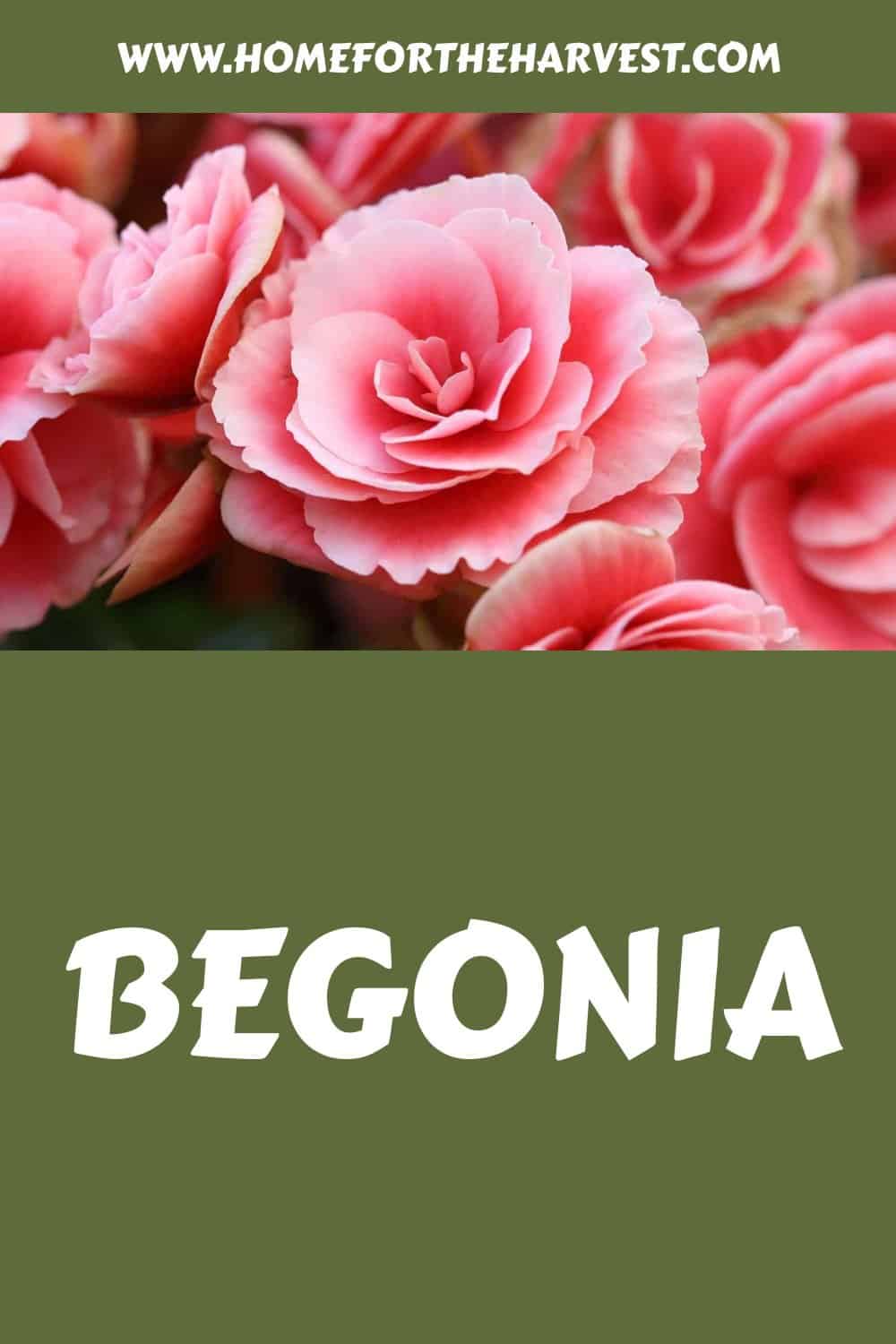Begonias are beautiful ornamental plants. Whether used for indoor decor, in the garden, or as a gift, Begonias are a wonderful plant to consider.
Begonia is a genus of flowering perennial tropical plants that includes over 2,000 different species. Begonias are typically separated into three groups based on their type of root system: Tuberous Begonias, Rhizomatous Begonias, and Fibrous Begonias. Some Begonias are grown mainly indoors as houseplants, while others are typically grown outdoors in the garden. Begonias are known for both their colorful flowers and their ornamental oval-shaped foliage. They grow best in humid conditions with bright, indirect light.
Begonias are not only beautiful in appearance, but are also quite easy to find in houseplant shops and garden centers. Read on to learn all about Begonias!
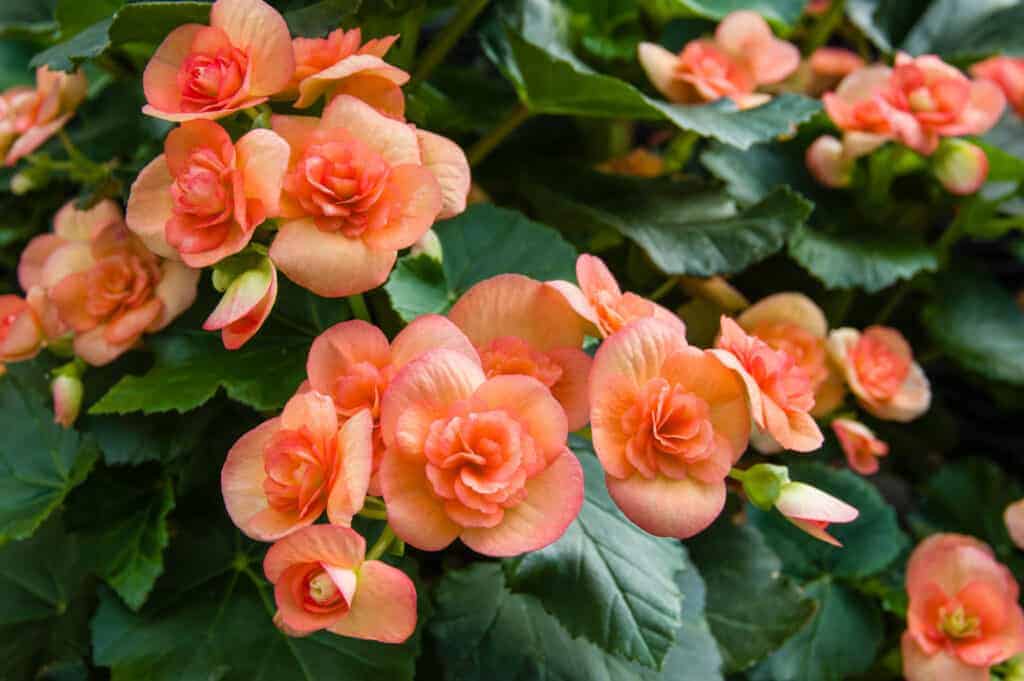
Begonia basics
Begonias are a genus of plants in the Begoniaceae family. The Begonia genus covers a remarkably wide number of species, as there are over 2,000 species of Begonias in the genus. Of those species, the five most popular or common are the Begonia foliosa, Begonia cucullata, Begonia obliqua, Begonia cocinnea, and the Begonia grandis.
Begonia plants are typically separated into three groups by gardeners, based on their type of root system: Tuberous Begonias, Rhizomatous Begonias, and Fibrous Begonias. Let’s look at each type.
Tuberous Begonias
Tuberous Begonias have thick fleshy roots and are grown mainly for their prominent ruffled flowers. Tuberous Begonias are popular outdoor container plants due to their reliable flowers and adaptability to shady spots. es. The most common and familiar colors for tuberous Begonias are pink, red, and white. Examples of tuberous-type plants include Summerwings Begonias and Nonstop Begonias.
Here are some specific Tuberous Begonia plant cultivars:
- Angelique Tuberous Begonia
- Picotee Tuberous Begonia
- Superba Tuberous Begonias
Rhizomatous Begonias
Rhizomatous Begonias have thick fleshy roots that creep along the surface and are grown mainly for their ornamental foliage. Rhizomatous Begonias are most often grown as container houseplants. Examples of rhizomatous-type plants include Rex Begonias and Beefsteak Begonias.
Here are some specific Rhizomatous Begonia plant varieties:
- Red Heart Rex Begonia
- Raindance Rex Begonia
- Purple Rain Rex Begonia
Fibrous Begonias
Fibrous Begonias have an ordinary root system of thin roots that create a fine web rather than a carrot-like tuber. Fibrous Begonias are generally grown for their foliage, and sometimes as bedding plants. Examples of fibrous-type plants include Wax Leaf Begonias, Angel Wing Begonias, and Polka Dot Begonias (Begonia Maculata).
Here are some specific Fibrous Begonia plants:
- Charm Pink Wax Leaf Begonia
- Pink Bronze Leaf Wax Begonia
- Torch Angel Wing Begonia
- Dragon Wing Begonia
More Begonias
There are also some crossed types of Begonias. For example, Rieger Begonias are hybrid crosses of Wax Fibrous Begonias and Tuberous Flowering Begonias.
The most frequent Begonia types to see are the tuberous and fibrous types. Depending on the particular species of Begonia, the plant can grow anywhere from two inches to six feet in height!
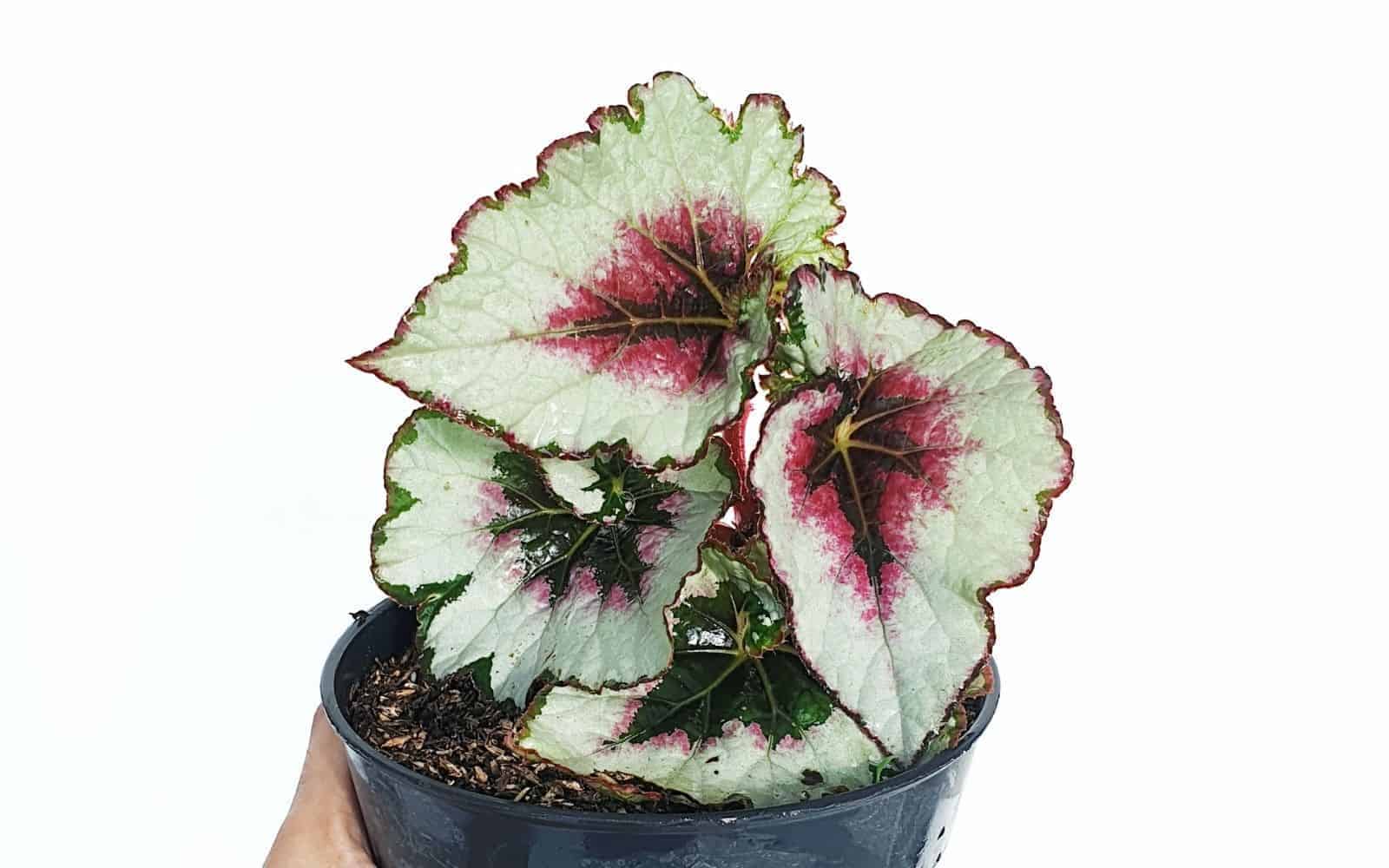
History of the Begonia
Begonia plants are native to regions of eastern Asia, southern Africa, and South America. Begonias were documented in 1690 by Charles Plumier, a French botanist and Franciscan monk who was searching for new plants in Brazil. They were popularized in the 1700s as ornamental plants.
Surprisingly, even though Begonias quickly developed a reputation for their vibrant and beautiful colors, that played no part in their name. During that time, there was a man named Michel Bégon who was a politician in the Caribbean country of Haiti. Bégon was a plant collector, and Charles Plumier named this new plant after him.
The American Begonia Society was created in 1932, in the midst of The Great Depression. This society originally began in California and consisted of Herbert P. Dyckman and some of his colleagues. Since then, the group has grown tremendously.
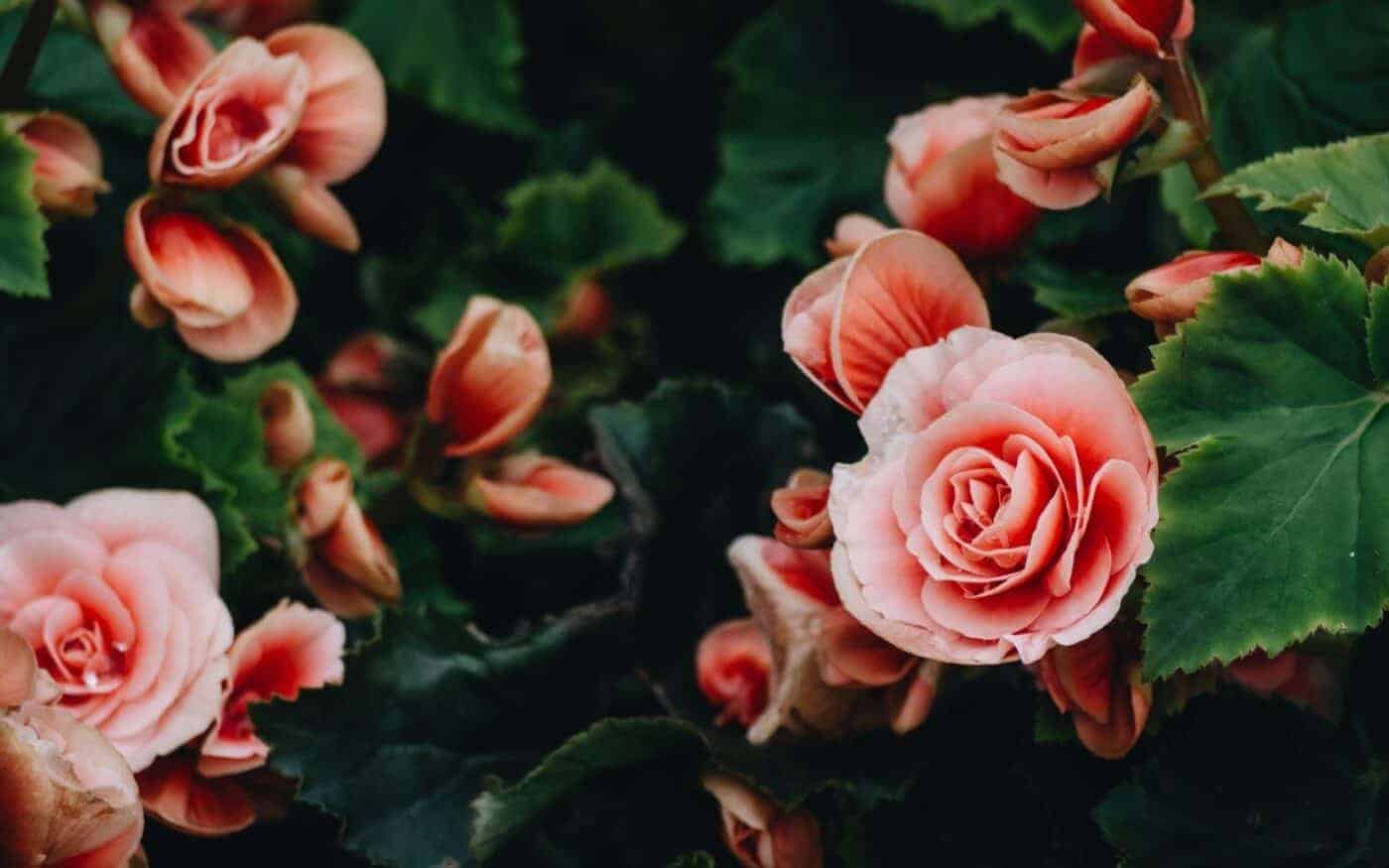
Growing Begonias
Begonias primarily grow and bloom in the summer months, although some types grow and bloom in the winter seasons. They grow and thrive the best in subtropical or tropical regions and settings with moderate conditions. They also love humidity and shade, so it is best to place them in a spot that gets more shade if that’s possible. They can be grown from trimmings or bulbs, and they will do well being grown outdoors or indoors. Make sure to have a light or lamp over them when growing Begonias inside though. They may like the shade but they still need light to photosynthesize.
There are a few methods to use when growing Begonias. A common route to take is to start growing the Begonias in the spring months, primarily March and April. It’s usually best to start them in an indoor setting and then move them outside later on. That will have some variance based on the climate of where you want the Begonias to be planted. Make sure to keep them in a spot with adequate sunlight while they are starting to grow.
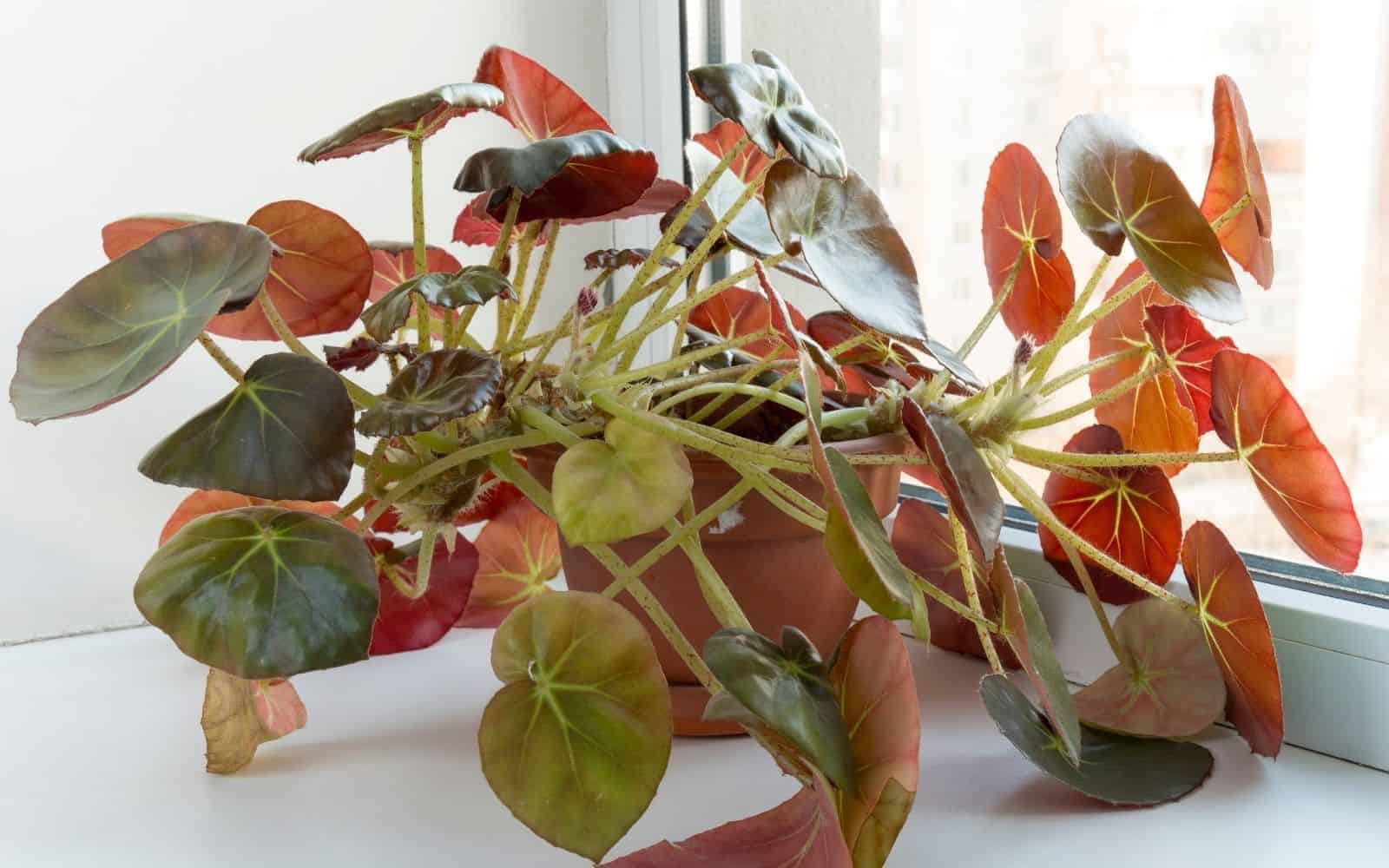
How to care for a Begonia plant
As previously mentioned, Begonias love humidity and shade, so it is best to place them in a spot that gets more shade. A nice perk of growing Begonias is that they make it relatively easy to do. If you’re going to be planting with bulbs, keep the bulbs facing upward when planting them. Keep them in a spot with adequate sun and make sure not to overwater them while they are beginning to grow. It should take the flowers approximately six to eight weeks to sprout.
Naturally, a Begonia’s beautiful appearance and fun characteristics make it a common flower to use as a gift. When receiving it as a gift, use the following tip to make the flowers last longer: trim the bottom of the stem. If you want the Begonias to keep holding on, plant them in the garden so they will last. Obviously watering flowers too much isn’t ever a good thing, but for Begonias, the soil should stay damp and moist as much as possible. Keeping them trimmed and maintained helps the Begonias to stay as healthy as possible.
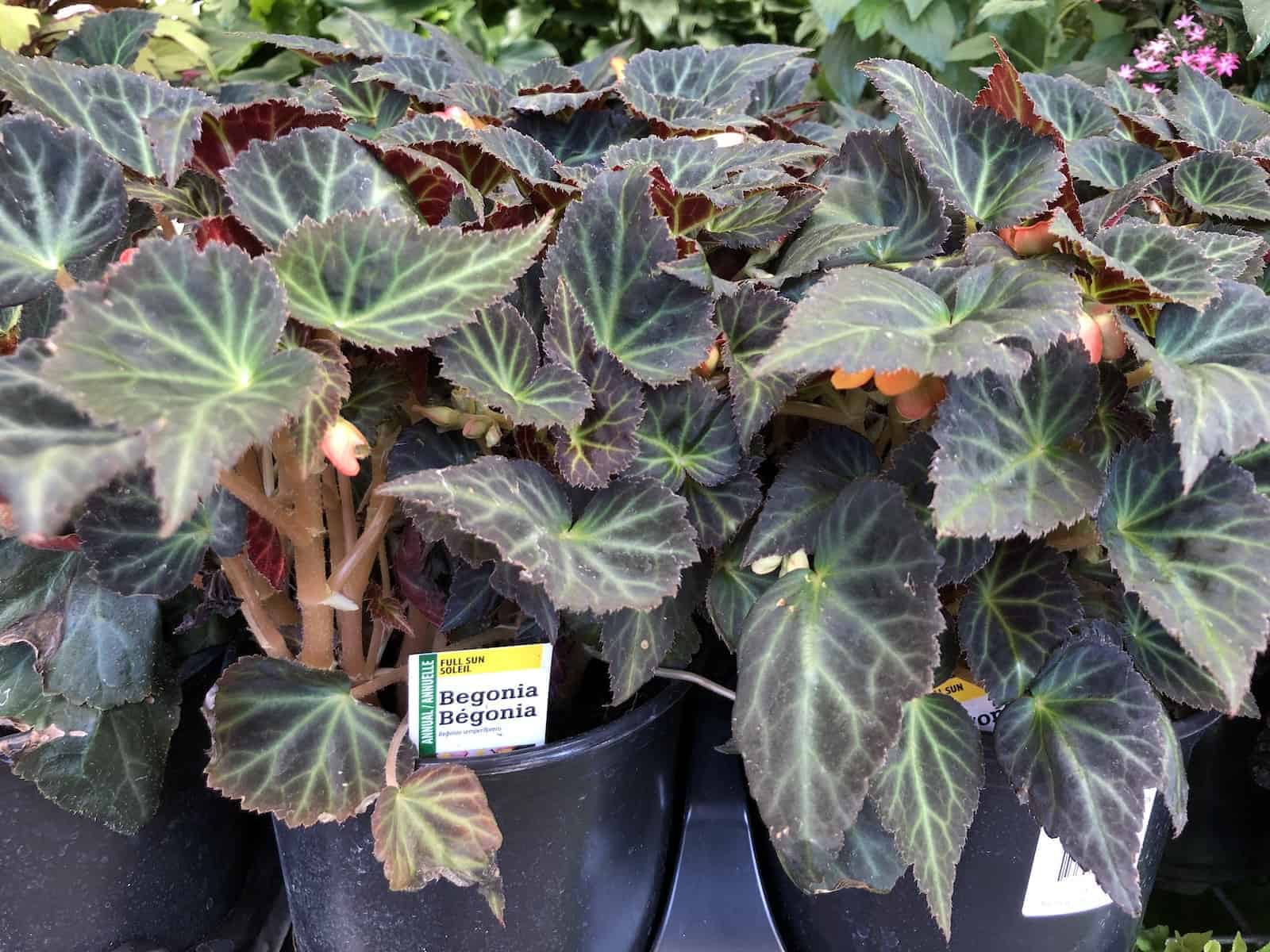
Another popular way to go is to plant bulbs in hanging pots (pots with some drainage are the best) and have them as a fun element of decoration for the patio and the yard. When using this method, place the hanging pot in an area with some shade (they need some light but love the shade, so indirect light is the best) and keep it watered, and fertilized (every couple weeks or so when they are growing), and maintained for the best results.
To overwinter or winterize the Begonias, proceed with the most applicable of the following: potted Begonias should be moved indoors over the winter months and kept drier. If the Begonias were planted in an outdoor garden, you will need to remove them and place them somewhere that is warm enough for them to survive the season. That will probably entail repotting them.
With Begonias that are tubers, they can be stored. To do that, after removing the Begonias from the ground, take off leaves, clear off the soil residue, dry them off, and store them. To store them, place them in a bag with vermiculite, peat moss, or wood shavings, and check frequently to make sure it isn’t drying out or starting to rot.
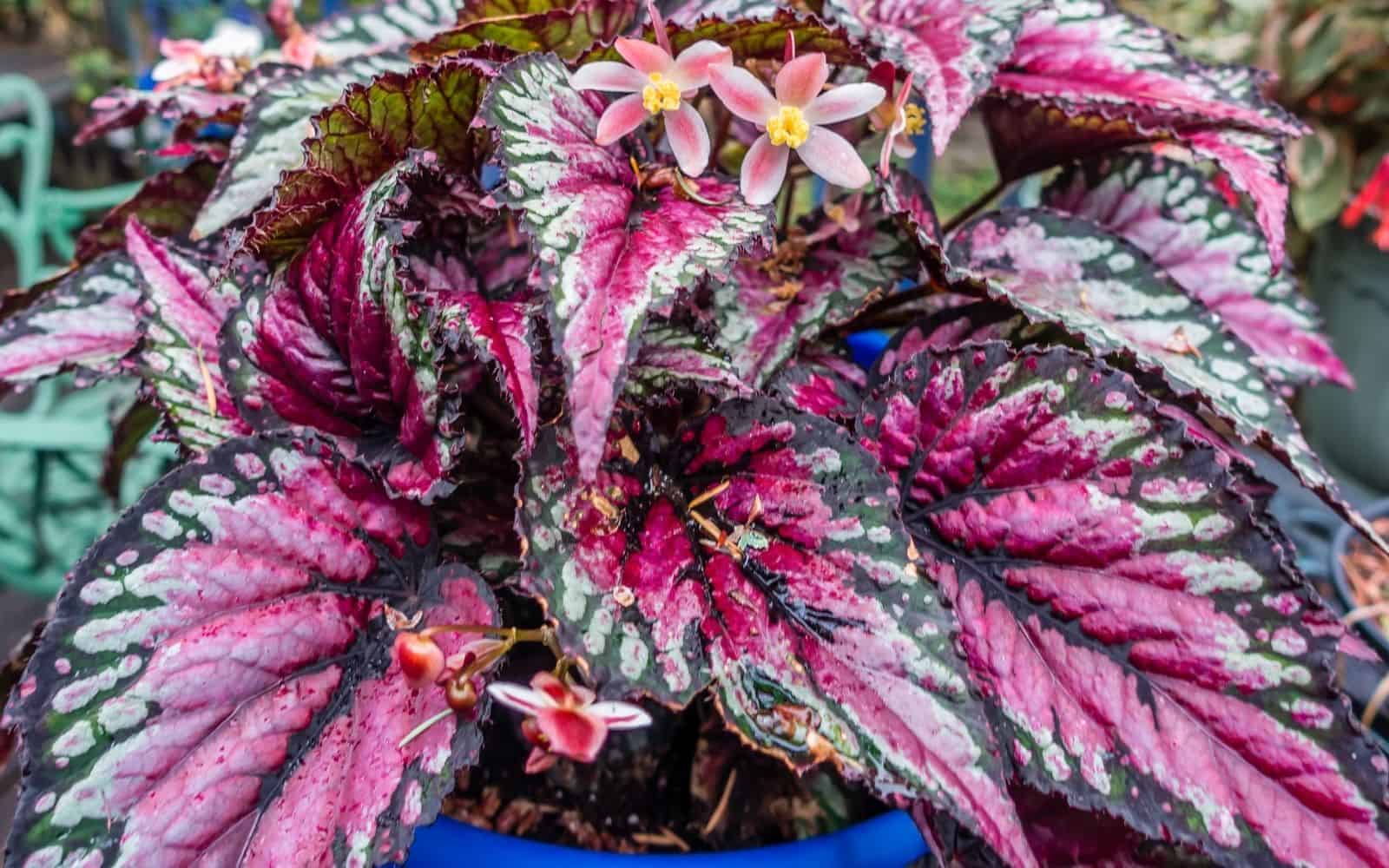
How to repot Begonias
There will be a couple of different processes for repotting Begonias based on their original condition. Let’s first address how to repot Begonias when they were in a vase with water before being replanted. To begin, trim the bottom of the stem and place the flower in moist, rich soil. Covering the soil with a plastic bag or saran wrap will keep the soil wetter and help the Begonia to take root in the soil more quickly. An additional trick to try is to soak the bottom of the stem in honey after it has been trimmed. Although it hasn’t been completely confirmed, many believe that this will help extend the life of the flower.
When they have previously been planted, use a light and well-drained soilless medium. The plant can be cut into different systems depending on the roots. When that is the case, keep the best of the sections.
Starting Begonias indoors
Out of the three primary types of Begonias, the Fibrous type (such as any in the Wax Leaf or Angel Wing subtypes) does well indoors. That being said, pretty much all types can be grown inside.
Here is how to start Begonias indoors:
- Use a small pot or seed tray and fill it with drained soil.
- Using soil that is a bit moist, in early March or so, plant the Begonias concave side facing upwards below the soil line where it would be seen.
- Cover or wrap and place in indirect light such as on a window sill.
- Make sure the temperature stays warm enough. Never let it drop below 60 degrees.
- Water it a little, only as much as necessary which shouldn’t be often. Follow that guideline until growth is evident above the soil around a month and a half later. Primarily, only the roots will grow leading up to that point.
- Move the plant outside once there has been enough growth and there is no danger of frost outdoors.
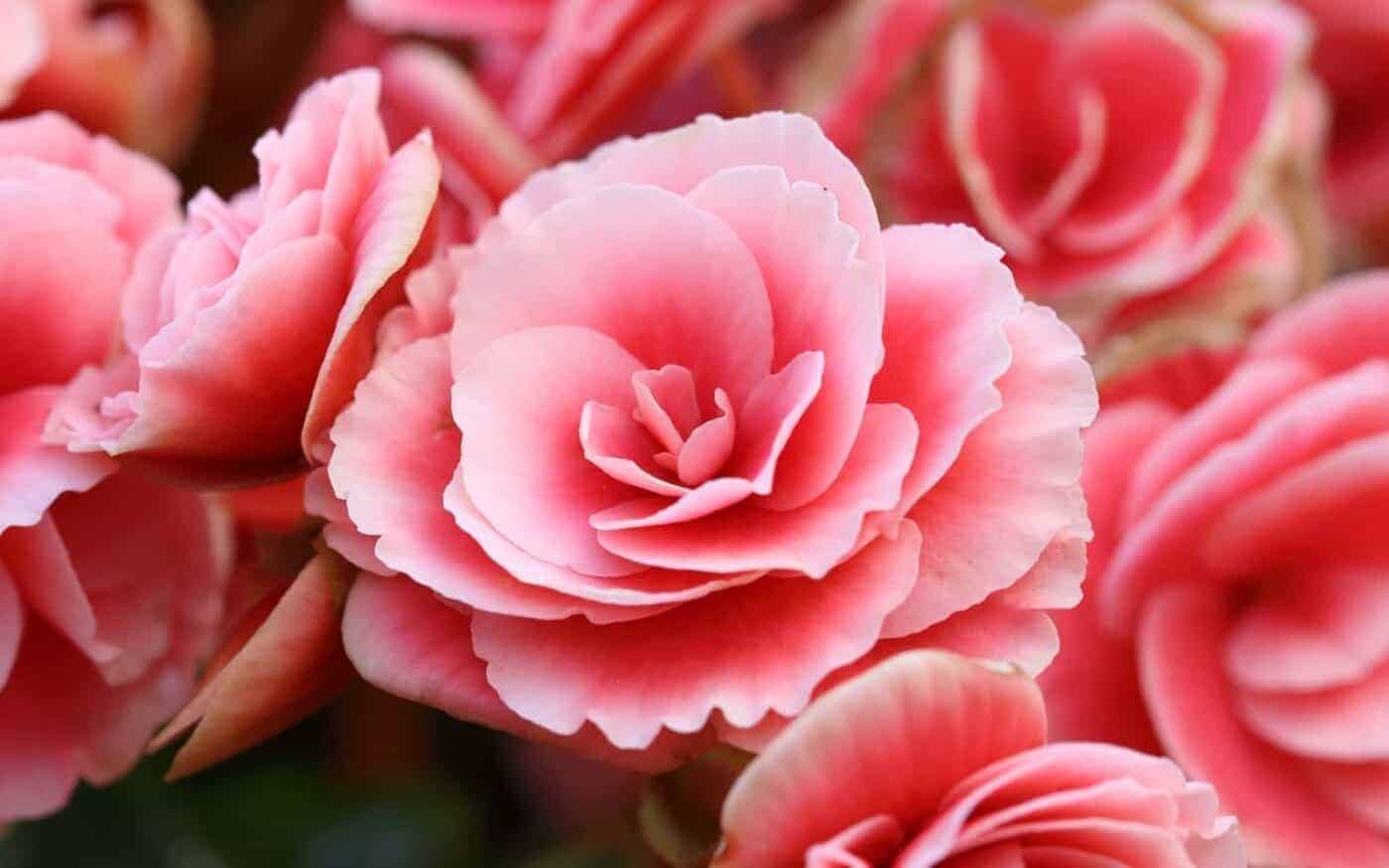
The meaning of Begonias
There are several different meanings behind Begonias. First, they represent warnings. That primarily comes from back in the day and isn’t as prominent currently, but some people still see Begonias as an omen of sorts. Some likewise view them as a sign of caution and vigilance. That is why they are sometimes gifted as a way of telling someone to stay safe and healthy.
Next, they portray uniqueness and individuality. Additionally, they symbolize gratitude and can be used as a means of showing thanks. Because they are also characterized by purity, they are sometimes included in spiritual or religious events.
The use of Begonias as an apology or sign of forgiveness comes from their symbolism of being free of strife and conflict. Lastly, they depict harmony, particularly in communications such as with political negotiations, and being nice, friendly, and cordial with one another in our interactions. There are also meanings behind Begonias based on the culture surrounding them.
Here are some of the meanings Begonias have based on the color of the flower:
- Red: When Begonias are red, they are especially great for a gift to a significant other. They represent desire, passion, love, devotion, romance, and undying love.
- Pink: A Begonia that is pink tells a similar story of love, but with less magnitude. They illustrate love and romance, but in more of an affection and interest type of way opposed to the desire and devotion aspect of the red color.
- Yellow: Yellow Begonias carry a fun connotation and look beautiful! They have the meanings of hope, joy, wealth, friendship, happiness, and kindness. They are undoubtedly a great choice for a variety of happy events.
- White: As previously mentioned, Begonias are sometimes included in spiritual or religious events, particularly christenings and sometimes weddings. When that is the case, the primary color of Begonia that is used is white. The reason for that is the white color represents innocence and purity. That being said, it is also a great and pretty color to use as decoration for other occasions that require that color scheme.
When giving Begonias to another person, it is typically a means of saying thank you, giving felicitations, or celebrating a landmark such as an anniversary. On the other hand, they are applied and viewed differently in literature. The author’s use of Begonias in the symbolism of their book may be meant to depict darkness and danger.
Before you go…
There are a few things to keep in mind with Begonias, especially when deciding which particular species of the genus to go with. First, some species can be problematic for people and especially dangerous for pets such as cats and dogs due to the sap they produce. Begonias also aren’t a flower that bees tend to like, which is something to keep in mind if you were hoping they would attract some buzzy friends.


